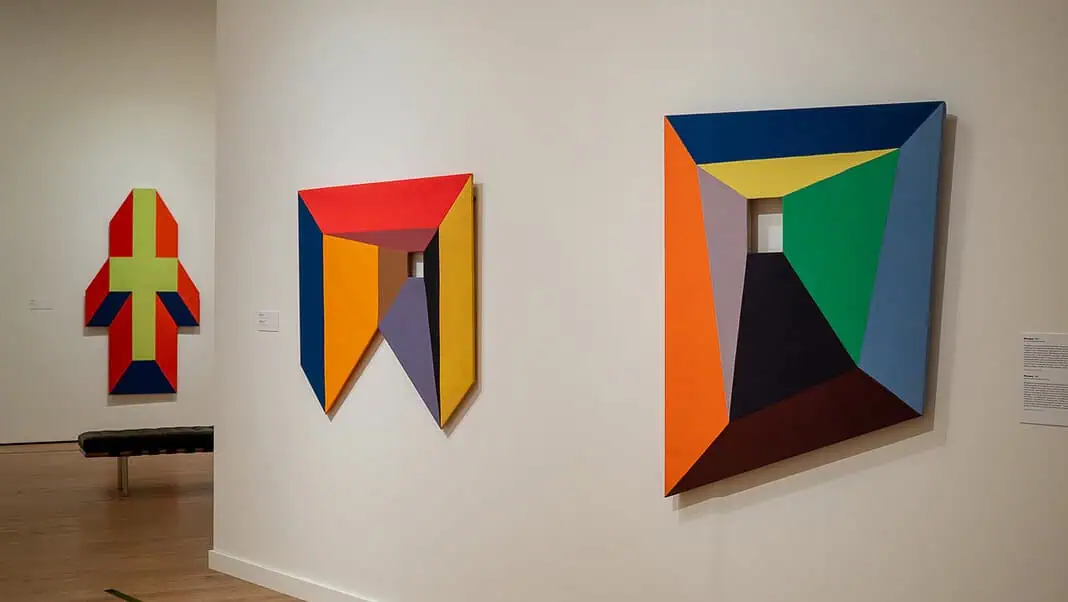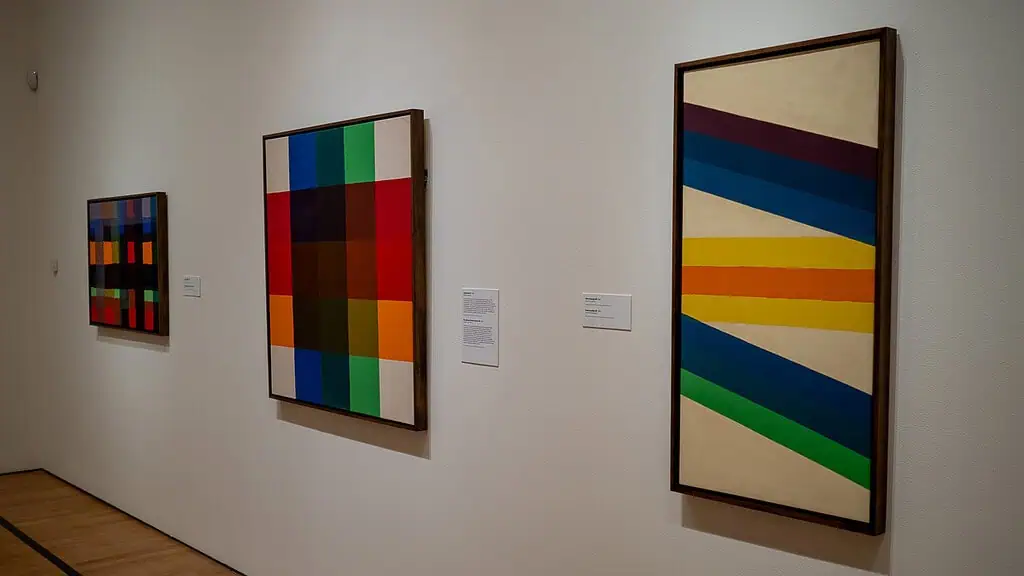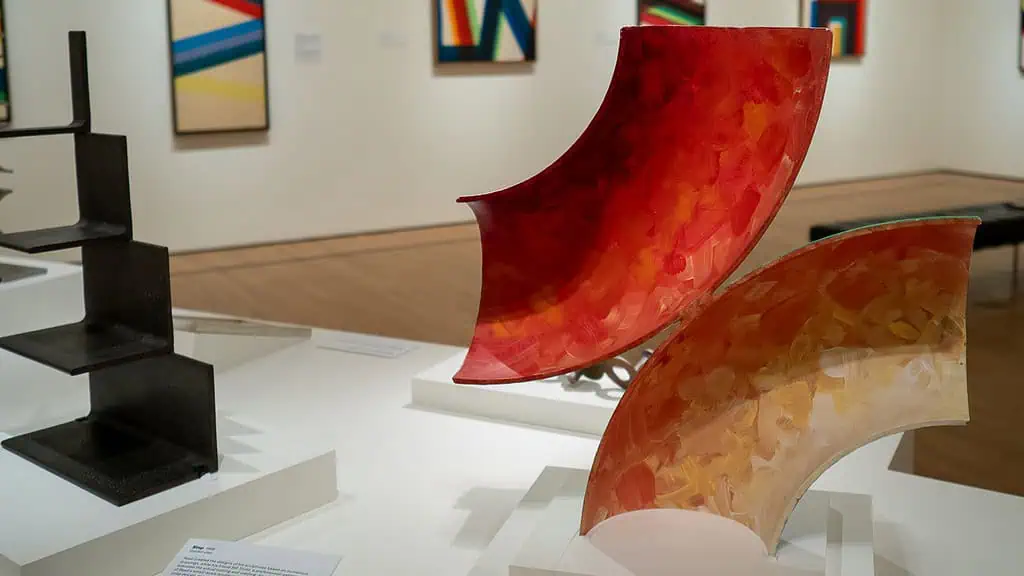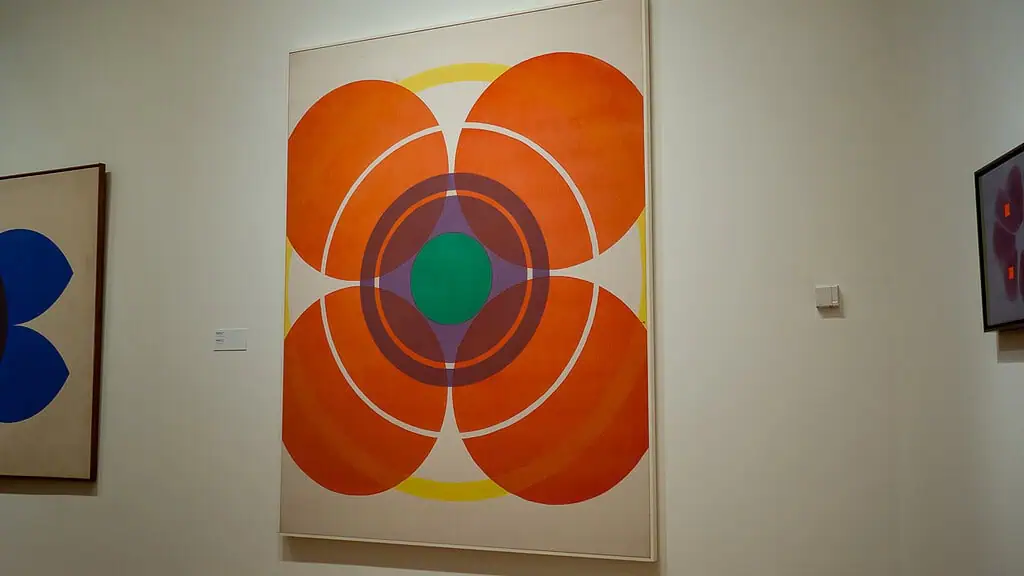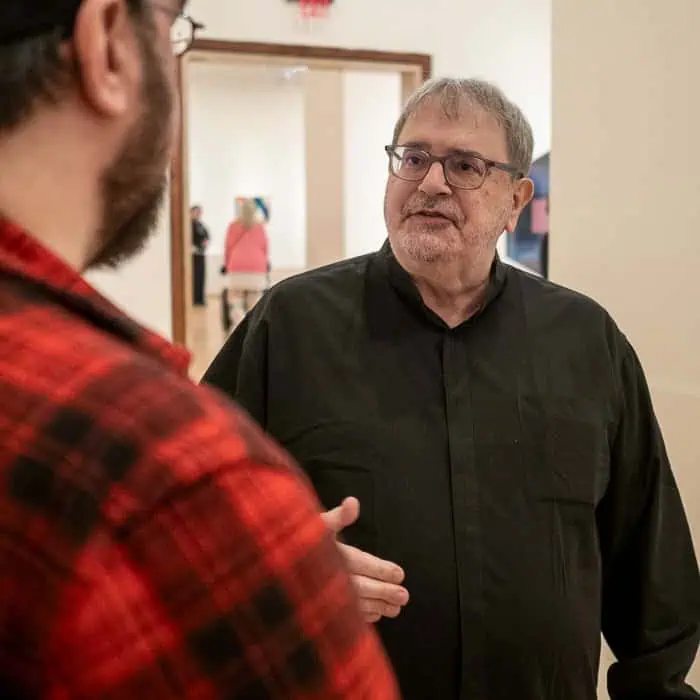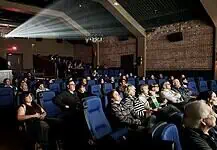OKLAHOMA CITY – The Oklahoma City Museum of Art is getting a jolt of eye-popping color and modern art history with a career-spanning exhibition of the works of painter/sculptor/photographer Paul Reed in a new, original show years in the making.
Opening Saturday, November, 22nd, “Paul Reed: A Retrospective” walks viewers through the life’s work of one of the preeminent – if underappreciated – figures of the influential Washington Color School that burst from Washington DC to shake the worlds of painting, visual arts, and creative design in the 1950s and far beyond.
It’s the culmination of years’ worth of acquisitions and also collaborations with guest curator David Gariff, PhD, a senior lecturer at DC’s National Gallery of Art, and Reed’s own daughter, Jean Reed Roberts, who bestowed a lifetime’s worth of Reed’s works upon OKCMOA.
“There’s an incredibly large group of works that he created,” Gariff told attendees about the exhibition during an early media preview event. “Reed was an incredibly prolific, but also very, very curious artist. He was constantly sort of challenging himself.”
The color and the shape
As a painter, Reed is best known for his vividly colorful, but considerably minimalist, works blurring the lines between visual design and abstract expressionism, often focusing on the study of simple shapes and the ways in which colors blend and overlap to create new shades and layers.
Many of this retrospective’s most eye-catching and vibrant works hail from Reed’s 1960s and 70s output, a time in which he was fascinated by the ways in which paint could blend with one another or bond to the canvas.
“He just continued to expand his curiosity and his attempts to deal with flatness, color, and staining,” Gariff told the event. “It looks very precise, but in fact, when you get up close, what’s interesting are the edges of things and how it may look like a straight line, but it has a certain kind of irregular, kind of linear element to it. So it still is reflecting the hand of an artist.”
He was known for implementing simple, straight paint-rollers to achieve clean lines and geometric layers, always experimenting with shapes and their relationship to the borders of his canvases.
Those shapes would present themselves as everything from enclosed circles to zigzag line work to some of Reed’s most famous studies, what’s known as his “Mandala series,” showcasing the heavily stylized, circular forms in a mode that seems to presage the late-60s psychedelic movement by a half-decade.
“These are all explorations,” Gariff said of Reed’s works of that period and the years beyond. “He’s moving towards a more geometric language, not so much the organic. You have to look closely at these paintings, and you’ll see how these colors bleed where they touch each other.”
Life’s work
While his career is most often defined by his work within that emerging group and movement of the 1950s known as the Washington Color School, Reed also developed his own style in sculpting, photography manipulation, and even wildly creative canvas design, all on display in this exhibition.
“I keep coming back to the term ‘curious,’ and as his career advances, he’s always looking at different ways of communicating,” Gariff said. “Often, he’ll show you something in one way that you would look at it and think ‘okay, I understand it,’ but then there’s some aspect of it that you find later, that you realize, ‘well, from this view, it’s something very, very different.’”
Those elements especially came to the fore in Reed’s later pieces, moving into photo collage, found objects, and thin fabric paintings meant to be lit through from behind, providing OKCMOA designers with an opportunity for interactivity with light-up displays in the exhibition’s final, small gallery of latter-year works.
The retrospective even includes what may be Reed’s very last creations, a pair of painted works from 2014 inspired by groundbreaking scientific discoveries at the time.
“These are paintings representing his interest at the end of his life in physics,” Gariff explained. “He’s always reinventing himself.”
‘An important event’
Reed lived until 2015, and now a decade on from his passing, this new exhibition designed by OKCMOA offers the first-ever large-scale retrospective of his life’s work, thanks primarily to Reed’s daughter, Jean, who has entrusted a mammoth collection of her father’s creations to the museum in recent years.
This show stands to elevate Reed to the same, deserved heights of many of his contemporaries, as well as showcasing his final works alongside his earliest and his best-known for the first time.
“He didn’t get the recognition that he deserved during his lifetime, I would say,” Gariff said. “Of that [Washington Color School] group, he was the one that just didn’t garner the same kind of accolades as the other members. What’s interesting is that Paul outlived all of them. He died at the age of 96 in Arizona, and he was working pretty much right up until the day he died.”
Even coming from the National Gallery of Art, perhaps one of the most respected and foundational arts institutions in the world, Gariff heaped praise on the OKCMOA team for their design of this show and the sprawling catalog of Reed’s works that they’ve compiled and published for the exhibition.
“This installation is beautiful,” Gariff told the media event. “I know I’m prejudiced, but everybody here did an incredible job, and this will be the touchstone now for future scholars with this exhibition and the catalog. This is an important event.”
“Paul Reed: A Retrospective” opens to the public Saturday, November 22nd and runs until April 12, 2026 at the Oklahoma City Museum of Art.
For more information, visit okcmoa.com.
Brett Fieldcamp is our Arts and Entertainment Editor. He has been covering arts, entertainment, news, housing, and culture in Oklahoma for 15+ years, writing for several local and state publications. He’s also a musician and songwriter and holds a certification as Specialist of Spirits from The Society of Wine Educators.
